-
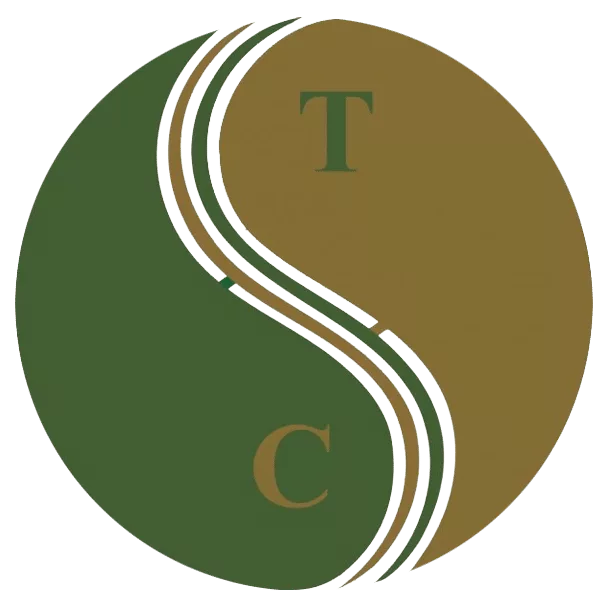 Art of Wellness Acupuncture & Traditional Chinese Medicine (TCM)11704 Wilshire Blvd, Suite 295, Los Angeles, CA, 90025
Art of Wellness Acupuncture & Traditional Chinese Medicine (TCM)11704 Wilshire Blvd, Suite 295, Los Angeles, CA, 90025
myartofwellness@gmail.com310-451-5522 Office Hours
MonClosedTue7:30 am --4 pmWed7:30 am --4 pmThu7:30 am -- 4 pmFri7:30 am -- 4 pmSat7:30 am -- 4 pmSunClosedOur office opens from Tuesdays to Saturdays 7:30 am to 4 pm, will be closed on Memorial day, Independent day, Labor day, Thanksgiving day, Christmas and New year.
-
Recent Posts
- Chinese New Year 2026: Year of the Horse
- Acupuncture and TCM Treatment for Perimenopause Symptoms
- How to Treat Insulin Resistance With Acupuncture and TCM
- How to Treat Metabolic Syndrome With Acupuncture and TCM
- How to Treat Syncope With Acupuncture and TCM
- How to Treat Thoracic Outlet Syndrome With Acupuncture and TCM
- How to Treat Dupuytren’s Contracture With Acupuncture and TCM
- How to Treat Nutcracker Syndrome With Acupuncture and TCM
- How to Treat Rosacea With Acupuncture and TCM
- How to Treat Perioral Dermatitis With Acupuncture and TCM
- Lymphatic Drainage With Acupuncture and TCM
- How to Treat Turf Toe With Acupuncture
- How to Treat Nerve Pain With Acupuncture and TCM
- How to Treat Watery Eyes With Acupuncture and TCM
- How to Treat Ovarian Cysts With Acupuncture and TCM
- How to Treat Dystonia With Acupuncture and TCM
- Sign up to receive news and updates and get my free report:“The Top 10 Reasons to Try Acupuncture”

December 2025 M T W T F S S 1 2 3 4 5 6 7 8 9 10 11 12 13 14 15 16 17 18 19 20 21 22 23 24 25 26 27 28 29 30 31
What We Treat
How to Treat Thoracic Outlet Syndrome With Acupuncture and TCM
By Qineng Tan, L.Ac., Ph.D. and Xiaomei Cai, L.Ac., Ph.D.
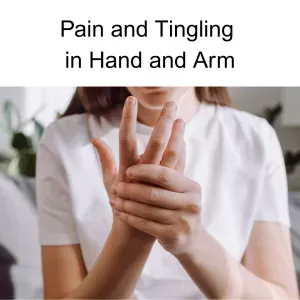
Tingling in one arm? Stiff neck and shoulder? Neck pain or headache back of head? These can be symptoms of thoracic outlet syndrome (TOS), or compression of the nerves and blood vessels that run through the neck and shoulder. Acupuncture and TCM offer thoracic outlet treatment to help relieve pain and numbness in the arm and hand.
Tingling pain and weakness in the arm and hand are the most common signs of thoracic outlet compression syndrome. You might wake up with pins and needles in your arm, or have a feeling of weakness in your hand after lifting things overhead or working for long hours at your computer.
What Causes Thoracic Outlet Syndrome?
There is a narrow space between your top rib and your collarbone, known as the thoracic outlet, through which a complex network of nerves and vessels run, connecting the neck and shoulder to the arm.
These nerves and arteries can become constricted due to tight or misaligned muscles (particularly the scalene or pectoralis minor), poor posture, or repetitive movements at work or while participating in a sport, resulting in impaired circulation, and nerve irritation.
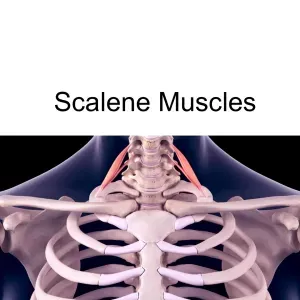
The three scalene muscles (anterior, middle, and posterior) attach the cervical vertebrae of the neck to the top two ribs. Key blood vessels (the brachial plexus, subclavian artery and vein) run through the narrow space between the scalene muscles. When these muscles become tight or pushed out of their proper alignment, this can cause compression or entrapment of the blood vessels, affecting blood flow and sometimes also putting pressure on the ulnar nerve, which extends from the neck all the way down to the hand.
Injury or trauma to the area due to a car accident (such as whiplash) could lead to thoracic outlet syndrome. Sports injuries or simply the repetitive movements involved in a sport could cause thoracic outlet syndrome to develop, particularly movements where the arm is extended above the head, as in swimming or baseball. Physical changes that occur during pregnancy and affect the posture can also aggravate nerves and blood vessels.
People with Ehlers-danlos syndrome may be more prone to developing thoracic outlet syndrome because of instability in the shoulder girdle.
In rare cases, a person might have an extra rib or other anatomical variation, which can contribute to TOS.
Top 10 Symptoms of Thoracic Outlet Syndrome
Symptoms of thoracic outlet compression syndrome can come and go and change over time. Common signs include: tingling and numbness in ring finger or pinky finger, pain in neck, pain in shoulder blade, soreness in the armpit or front of chest.
Common symptoms of thoracic outlet:
- Tingling, numbness, or a “pins and needles” sensation in the arm or hand
- Feeling of fatigue in the arm, or arm feels heavy
- Weakness in the hand grip or difficulty lifting objects, loss of fine motor skills in the hand, clumsiness, dropping things
- Aching pain or tenderness and sensitivity in the neck, shoulder, collarbone or chest, sometimes radiating down the arm
- Shoulder appears to be drooping, slumped posture
- Swelling, discoloration, and/or a sensation of cold in the affected arm or hand
- Headaches, especially pain in the back of the head, headache at the base of the skull
- Loss of muscle in the base of the thumb
- Weak pulse in the affected arm
- Blood clots or deep vein thrombosis
Symptoms like tingling and weakness of the arm and hand usually become worse after the arm has been in an elevated position, performing activities that require the arm to be raised over the head.
Signs of thoracic outlet syndrome can appear similar to those of other conditions, like carpal tunnel syndrome, cubital tunnel syndrome, cervical radiculopathy, or other cervical spine issues. Some of the symptoms of thoracic outlet syndrome are also similar to the symptoms of a heart attack.
Typical Thoracic Outlet Syndrome Therapies
Diagnosis of TOS generally begins with a detailed medical history and physical exam, in which maneuvering the arm or neck rotation may reproduce symptoms. Imaging tests such as X-rays, MRI, CT scans, or Doppler ultrasound help assess anatomical contributors and vascular involvement. Nerve conduction studies can also confirm nerve compression.
Conventional treatment for thoracic outlet syndrome typically starts conservatively. A central focus is on physical therapy, aimed at stretching tight muscles, improving posture, and strengthening supportive muscle groups. Pain may be managed with medications like NSAIDs or muscle relaxants. If symptoms persist or worsen, interventions such as targeted injections (e.g., botulinum toxin into tight scalene muscles) or surgical options (like first-rib resection) may be suggested.
These methods can offer relief, especially when implemented early. Still, recovery can be prolonged and some patients may experience recurring symptoms. Acupuncture and TCM offer alternative management for thoracic outlet syndrome.
Can Acupuncture Help Thoracic Outlet Syndrome?
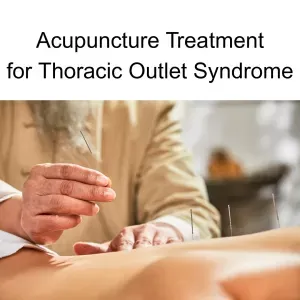
In Traditional Chinese Medicine, thoracic outlet syndrome is viewed as a problem of Qi (energy) and blood stagnation within the meridians that traverse the neck and shoulders, especially the Liver, Gallbladder, and Lung channels. Emotional stress, poor posture, or physical strain may disrupt the smooth flow of Qi, leading to obstructions that manifest as pain, numbness, or movement difficulty.
Additional contributing factors may include Wind-Cold-Damp invasion, which contracts muscles; Liver Qi stagnation, which impairs flexibility; and Spleen or Kidney weakness, which fails to support the body’s structural integrity and recovery.
TCM addresses both the symptomatic blockage and the deeper systemic imbalances underlying the condition.
TCM Treatment for Thoracic Outlet Syndrome
TCM takes a multi-dimensional approach to treating TOS. Acupuncture uses fine needles to stimulate key points that encourage the release of stagnant Qi and improve blood flow.
Cupping and Gua Sha techniques help soften fascia, reduce muscle tension, and encourage lymphatic and blood circulation.
Herbal formulas may include herbs that invigorate blood, relax sinews, and strengthen muscles and fascia.
Lifestyle changes, emphasizing improved posture, ergonomic adjustments, mindful movement, stress management, and dietary tips can help reduce inflammation and support healing.
Controlled trials and case studies suggest acupuncture effectively reduces pain and improves function in conditions involving neurovascular compression. For instance, a controlled study published in 2019 reported significant decreases in pain and disability among patients receiving acupuncture for TOS symptoms.
Another case study found that acupuncture combined with TCM herbal therapy provided thoracic outlet syndrome relief by alleviating shoulder tightness, restoring flexibility, and reducing numbness.
Several clinical groups are exploring acupuncture-mediated modulation of microcirculation, inflammatory markers, and nerve conduction—underscoring its role as a promising complement to standard care.
Acupuncture Near Me for Thoracic Outlet Syndrome in West Los Angeles
TCM modalities are excellent for helping to relieve pain and tingling and improving range of motion for a wide variety of conditions. Acupuncture can provide symptom relief and fundamental improvement of conditions like nutcracker syndrome, carpal tunnel syndrome, cubital tunnel, syndrome, nerve pain, shoulder pain, neck pain, and thoracic outlet syndrome. Drs. Tan and Cai at Art of Wellness in Santa Monica/West Los Angeles have over 35 years of experience in treating vascular and nerve conditions.
*This article is for education from the perspective of Traditional Chinese Medicine only. The education provided by this article is not approved by FDA to diagnose, prevent, treat and cure human diseases. It should not stop you from consulting with your physician for your medical conditions. Traditional Chinese Medicine is based on Qi, which is an invisible force that usually cannot be observed by modern science. Because science focuses on testing ideas about the natural world with evidence obtained through observation, these aspects of acupuncture can’t be studied by science. Therefore acupuncture and Chinese herbs are often not supported by double-blind, randomized trials, and they are considered alternative medicine therapies in the United States.
How to Treat Dupuytren’s Contracture With Acupuncture and TCM
By Qineng Tan, L.Ac., Ph.D. and Xiaomei Cal, L.Ac., Ph.D.
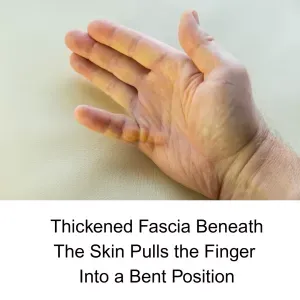
Fingers bent and can’t straighten? Dupuytren’s contracture is a condition in which the tissues under the skin of the fingers get thick and tight, making it hard to open your hand fully. Acupuncture and TCM offer alternative treatment for Dupuytren’s Contracture to help improve mobility in the fingers and hand.
Dupuytren’s Contracture is a progressive condition that causes the fingers—most often the ring and pinky fingers—to bend toward the palm, eventually interfering with hand function. Although it often develops slowly over several years, the impact on everyday activities can be significant.
What Is Dupuytren’s Contracture?
Dupuytren’s Contracture is a connective tissue disorder that affects the palmar fascia—the fibrous layer beneath the skin of the palm and fingers. Over time, this tissue thickens and shortens into tough, cord-like structures that gradually pull the fingers into a bent position.
This condition most commonly affects the ring and pinky fingers. While the condition is typically painless, it can significantly limit hand function, making it difficult to perform daily tasks like grasping objects, typing, or even shaking hands.
It is more common in older adults, particularly men, and often develops in both hands, though one may be more severely affected. Patients may also notice small nodules or puckering of the skin in the palm during the early stages.
Symptoms of Dupuytren’s Contracture
In the beginning, the condition might present as a small lump or thickened band of tissue in the palm. These fibrous cords become more pronounced over time, leading to increasing difficulty in extending one or more fingers.
Typically, the ring and little fingers are affected. As the disease progresses, the fingers are pulled inward toward the palm in a flexed position. This flexion limits hand mobility and can make everyday tasks, such as putting hands in pockets or wearing gloves, challenging. Additionally, the skin on the palm may appear puckered or dimpled, reflecting the tightening of the underlying fascia.
Top 5 Signs of Dupuytren’s Contracture
- A small lump or nodule in the palm or thickened bands or cords of tissue under the skin
- Difficulty fully extending one or more fingers
- Fingers (typically ring and pinky) pulled into a bent position
- Loss of hand function or reduced range of motion
- Puckering or dimpling of the skin on the palm
In the early stages, symptoms of Dupuytren’s Contracture may be subtle and not interfere much with hand use. As the contracture progresses, everyday tasks can become increasingly difficult.
What Causes Dupuytren’s Contracture?
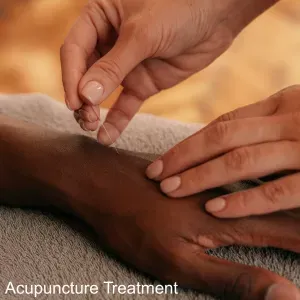
Although the exact cause remains unknown, several risk factors are known to contribute to the development of Dupuytren’s Contracture. Genetics seem to play a significant role; people with a family history of the condition are at a higher risk of developing the condition.
Certain health conditions, such as diabetes and epilepsy, have been linked to a higher incidence of Dupuytren’s. Lifestyle choices like smoking and heavy alcohol use may also contribute to the formation of these fibrous hand contractures by promoting inflammation and poor circulation.
Conventional Diagnosis and Treatment for Dupuytren’s Contracture
A medical diagnosis of Dupuytren’s Contracture typically involves a physical examination and a discussion of symptoms. One common clinical assessment is the “tabletop test,” in which the patient tries to lay their hand flat on a surface. Inability to do so often indicates the presence of contracture.
In early or mild cases where the fingers are still mostly functional, doctors may suggest observation. However, if the condition progresses to the point where hand function is compromised, treatment becomes necessary.
Conventional treatments include steroid injections to reduce inflammation in nodules, enzyme injections such as collagenase to weaken the cords and allow manual extension, and needle aponeurotomy, a technique that involves breaking up the thickened tissue with a needle. In more advanced cases, surgical removal of the diseased fascia, known as fasciectomy, may be required. Though these interventions can be effective in the short term, recurrence is common, and recovery—particularly from surgery—can be long and uncomfortable.
Can Acupuncture Help Dupuytren’s Contracture?
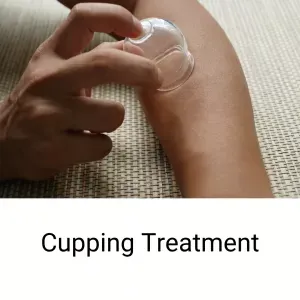
In Traditional Chinese Medicine, Dupuytren’s Contracture is seen as a manifestation of internal imbalances that obstruct the flow of Qi and blood through the meridians of the hand. The condition corresponds with what TCM describes as “Bi syndrome,” or painful obstruction syndrome. According to TCM theory, this condition often arises from external pathogenic factors like Wind, Cold, and Dampness invading the meridians and causing stagnation. Over time, this stagnation leads to blood stasis and the formation of hard nodules and fibrous bands that contract the hand.
Additionally, internal imbalances—such as Liver Qi stagnation, which impairs the smooth flow of energy and affects the sinews, and Kidney deficiency, which weakens the bones and tendons—may underlie the development of this condition. These factors contribute to the gradual stiffening and deformity of the hand over time.
A TCM approach to treating Dupuytren’s Contracture focuses on restoring the proper flow of Qi and blood, relaxing tendons, and softening nodules. Acupuncture can help increase circulation, reduce inflammation, and relieve the tightness and rigidity in the fascia. Local needling around the palm and forearm is often combined with other points along the meridians to address systemic imbalances.
Moxibustion, the therapeutic application of heat using the dried herb mugwort, is sometimes applied over the affected area to dispel Cold and Dampness and improve local blood flow. This can help relieve stiffness and improve finger mobility. Tui Na, or Chinese medical massage, may also be used to manipulate the hand and fingers, helping to break up fibrous tissue and restore range of motion.
Herbal medicine—both internal formulas and topical liniments—can be customized to nourish the blood, dispel stasis, and promote tendon health.
Cupping therapy may also be incorporated to stimulate circulation and relax the contracted fascia. These methods, used together, provide a comprehensive, non-invasive way to manage symptoms and potentially slow the progression of Dupuytren’s Contracture.
One case study reported significant improvements in a patient’s hand mobility, along with reduced pain and thickening of tissue, after a series of six acupuncture treatments supported by moxibustion and herbal therapy.
Another published case study described how acupuncture and electroacupuncture helped a patient reduce the thickness of nodules and regain finger extension.
Research into acupuncture’s effectiveness in treating fibrotic and musculoskeletal disorders suggests that this modality may be especially well-suited for managing connective tissue issues. Acupuncture can promote fibroblast remodeling, modulate inflammation, and improve microcirculation—mechanisms that are directly relevant to the treatment of Dupuytren’s.
Acupuncture Near Me for Dupuytren’s Contracture in West Los Angeles
If you’re noticing a thickening in your palm or your fingers are beginning to curl inward, you don’t have to wait until surgery becomes necessary. Early intervention with acupuncture and Traditional Chinese Medicine may help restore mobility, reduce discomfort, and potentially slow the progression of Dupuytren’s Contracture.
At Art of Wellness Acupuncture in West Los Angeles, we create personalized treatment plans that address the whole person—targeting both symptoms and the root imbalances underlying them. Contact us today to learn how we can help you regain full use of your hands with the help of TCM.
*This article is for education from the perspective of Traditional Chinese Medicine only. The education provided by this article is not approved by FDA to diagnose, prevent, treat and cure human diseases. It should not stop you from consulting with your physician for your medical conditions. Traditional Chinese Medicine is based on Qi, which is an invisible force that usually cannot be observed by modern science. Because science focuses on testing ideas about the natural world with evidence obtained through observation, these aspects of acupuncture can’t be studied by science. Therefore acupuncture and Chinese herbs are often not supported by double-blind, randomized trials, and they are considered alternative medicine therapies in the United States.
How to Treat Perioral Dermatitis With Acupuncture and TCM
By Xiaomei Cai, L.Ac., Ph.D. and Qineng Tan, L.Ac.

Itchy red bumps around mouth, nose, or under eyes? Perioral dermatitis is a common inflammatory skin condition that shows up as a red, bumpy rash on the face. Acupuncture and TCM offers a holistic way to help get rid of perioral dermatitis.
What Is Perioral Dermatitis?
Perioral dermatitis is a type of face rash that primarily affects the area around the mouth (perioral), though it can also show up around the nose (perinasal dermatitis) and eyes (periorbital dermatitis). This condition is most commonly seen in women aged 20–45, but it can affect men and children as well. It’s considered a form of rosacea or a rosacea-like condition by many dermatologists, though it has its own distinct features.
Unlike acne, the red bumps in perioral dermatitis don’t contain pus, and unlike eczema, the rash is not typically scaly or flaky. It often appears suddenly and can be persistent, sometimes lasting for weeks or months.
Traditional Chinese Medicine (TCM), including acupuncture and herbal therapy, offers a natural approach to different types of dermatitis that focuses on healing the skin and addressing underlying imbalances that cause this condition.
Top 5 Symptoms of Perioral Dermatitis
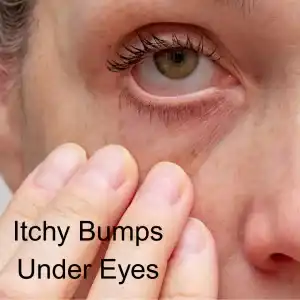
Perioral dermatitis can sometimes be mistaken for other health issues that cause skin rashes or other skin conditions, such as: acne, herpes, rosacea, contact dermatitis, seborrheic dermatitis, discoid lupus, and papula sarcoidoisi. The most common signs of Perioral Dermatitis include:
- Red, inflamed bumps around the mouth, nose, or eyes
- Burning or itching sensation in the affected area
- Dry, tight, or peeling skin
- Clear fluid or pus in some bumps (though usually not like acne)
- Rash that spares the skin directly around the lips (creating a clear border)
Typically, perioral dermatitis will become worse with use of corticosteroid creams or heavy moisturizers.
It is important to recognize this condition, so that it can be treated appropriately.
What Causes Perioral Dermatitis?
The exact cause of perioral dermatitis is not fully understood, but several triggers and contributing factors have been identified. People who already suffer from eczema may be more prone to developing perioral dermatitis, because eczema can affect the skin barrier. Here are some of the things that might trigger an perioral dermatitis outbreak or flare up:
Topical corticosteroid use – This is the most common trigger. Long-term use of steroid creams, even over-the-counter hydrocortisone, can lead to this rash.
Hormonal changes – Many people who menstruate notice flare-ups around their menstrual cycle or during times of hormonal fluctuation.
Use of heavy facial creams or cosmetics – Occlusive skin products may block pores and irritate the skin.
Fluoridated toothpaste – Some people find their symptoms worsen with fluoride-containing toothpaste.
Environmental triggers – Sun exposure, wind, and heat can aggravate the skin.
Microbial imbalance – Overgrowth of certain bacteria or yeast on the skin may play a role.
Stress – Emotional stress can weaken the immune system and disrupt skin balance.
Dietary factors – Some people report flares related to certain foods, like spicy foods or alcohol.
Diagnosis and Treatment for Perioral Dermatitis
In a conventional medical setting, diagnosis is typically made based on a visual exam and patient history. A dermatologist may ask about what kinds of skincare products you use, medications (especially steroid use), and recent lifestyle changes.
Standard treatments include:
Discontinuation of steroid creams – Although this may cause a rebound flare, it is essential to stop steroid use.
Topical antibiotics or anti-inflammatory creams – Such as metronidazole or clindamycin.
Oral antibiotics – Like tetracycline or doxycycline, especially for more stubborn cases.
Skin care guidance – Patients are usually advised to stop all current products and switch to a minimalist routine with gentle cleansers and no makeup.
While these treatments can be effective, they don’t always address the root cause, and relapses are common—especially if underlying imbalances are not corrected.
TCM for Perioral Dermatitis
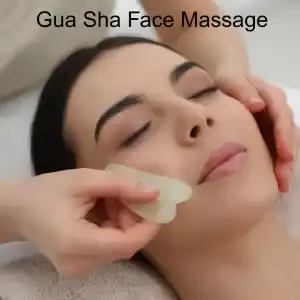
Traditional Chinese Medicine sees perioral dermatitis not just as a skin problem, but as a sign of deeper internal disharmony. In TCM, the health of the skin is closely related to the health of the Lung, Stomach, and Spleen organ systems. When there is heat, dampness, or toxicity trapped in the body, it can manifest as inflammation on the skin.
For example, a rash around the mouth is often related to Stomach Heat or Spleen Dampness, especially if digestion is weak or the diet is rich in spicy or greasy foods. If the rash appears around the nose and cheeks, Lung Heat or Wind-Heat may be contributing factors.
TCM also considers emotional stress and hormonal imbalance as key factors in skin conditions. Emotional stress can create stagnation in the Liver system, while hormonal changes may disrupt the balance of Yin and Yang in the body, leading to heat and inflammation.
Can Acupuncture Help Perioral Dermatitis?
Acupuncture and TCM therapies aim to treat the root cause of perioral dermatitis while also calming the skin and promoting healing.
Acupuncture helps regulate the immune system, reduce inflammation, and rebalance the organ systems involved. Specific acupuncture points may be used to clear heat, drain dampness, and support the Spleen and Lung.
Chinese herbal medicine can be customized to each patient’s individual pattern. Herbal formulas will be customized for each individual, depending on the presentation.
Dietary and lifestyle recommendations are often part of treatment, helping patients avoid inflammatory foods, support digestion, and reduce stress.
Facial gua sha and herbal washes can be used as topical therapies to calm redness, promote lymphatic drainage, and soothe irritated skin.
In many cases, patients find that their rash improves significantly with a few weeks of consistent acupuncture and herbal therapy—without the side effects of antibiotics or topical steroids.
While studies specifically on acupuncture for perioral dermatitis are limited, research shows that acupuncture is effective in treating other inflammatory skin conditions like eczema, acne, and rosacea. These studies demonstrate that acupuncture can reduce inflammation, balance hormones, and modulate the immune system, which are all key factors in healing perioral dermatitis.
A review found that acupuncture reduced itch, redness, and lesion count in patients with atopic dermatitis. Another study noted improvement in acne symptoms with acupuncture and herbal medicine, especially in women with hormonal imbalances.
Acupuncture Near Me for Perioral Dermatitis in West Los Angeles
If you’ve been struggling with persistent or recurring perioral dermatitis and are looking for a more holistic, drug-free way to manage your symptoms, acupuncture and Traditional Chinese Medicine offer a safe and effective alternative. By treating both the surface symptoms and the internal imbalances, we help the skin heal from the inside out.
At Art of Wellness Acupuncture, we specialize in treating chronic skin conditions like perioral dermatitis using the principles of Traditional Chinese Medicine. Every treatment is tailored to your unique constitution and lifestyle, so you can heal naturally and prevent future flare-ups. If you’re dealing with red, itchy bumps around your mouth or face, don’t wait—reach out today to schedule your consultation and get started on the path to clearer, calmer skin.
*This article is for education from the perspective of Traditional Chinese Medicine only. The education provided by this article is not approved by FDA to diagnose, prevent, treat and cure human diseases. It should not stop you from consulting with your physician for your medical conditions. Traditional Chinese Medicine is based on Qi, which is an invisible force that usually cannot be observed by modern science. Because science focuses on testing ideas about the natural world with evidence obtained through observation, these aspects of acupuncture can’t be studied by science. Therefore acupuncture and Chinese herbs are often not supported by double-blind, randomized trials, and they are considered alternative medicine therapies in the United States.
How to Treat Cervical Radiculopathy With Acupuncture and TCM
By Qineng Tan, L.Ac., Ph.D. and Xiaomei Cai, L.Ac., Ph.D.
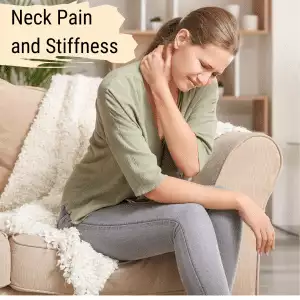
Neck pain? Stiff neck? These could be signs of cervical radiculopathy caused by a pinched nerve in neck. Acupuncture and TCM can provide neck pain relief and address the underlying causes of cervical radiculopathy.
Cervical radiculopathy occurs when a nerve in the neck becomes compressed or irritated where it branches away from the spinal cord. This is often referred to as a “pinched nerve.” This condition can lead to neck pain, weakness, and other symptoms not only in the neck but radiating into the arms and hands as well.
Cervical radiculopathy can be caused by several different factors, most of which involve some form of nerve compression in the neck.
One of the most common causes is a herniated disc, also known as a slipped disc in neck, or bulging disc in neck. This happens when the gel-like center of a spinal disc pushes out through a crack in the tougher exterior, putting pressure on a nearby nerve root. This can happen due to injury or degeneration over time.
Cervical spondylosis, also known as neck arthritis or cervical osteoarthritis, is a common age-related condition that affects the joints and discs in your neck. As the discs and cartilage between the cervical vertebrae wear down, this can cause neck pain and stiffness.
Degenerative disc disease and osteoarthritis are also common causes of a pinched nerve in neck. As we age, the spinal discs lose water content and shrink, leading to decreased cushioning between the vertebrae. This can cause the bones to rub against each other and lead to the formation of bone spurs, which can press on nerves and cause radiculopathy.
Another potential cause is spinal stenosis, which is the narrowing of the spaces within the spine. Lumbar spinal stenosis can result from a variety of factors, including thickened ligaments or overgrown bones, and leads to pinching or compression of the nerve roots as they exit the spinal column.
Additionally, trauma or injury to the neck, such as from car accidents or sports injuries, can directly damage the vertebrae or discs and result in a pinched nerve.
In more rare cases, tumors or infections in the spine may also cause cervical radiculopathy by compressing nerve roots.
Top 5 Symptoms of Cervical Radiculopathy

Pain in the neck and shoulders and headache are the most common symptoms associated with cervical radiculopathy. Poor reflexes and muscle weakness can also occur with a pinched nerve in the neck.
- Neck and shoulder pain – sharp or burning pain that starts in the neck and may radiate down the shoulder, arm, and hand
- Neck Stiffness – difficulty turning or moving the neck, neck muscle pain, muscle spasm in neck
- Numbness or Tingling in the shoulder, arms, or hands due to nerve compression.
- Muscle weakness in the arms or hands, trouble gripping or lifting objects.
- Neck pain and headache, headache that starts with neck pain
Diagnosis and Treatment for Cervical Radiculopathy
Diagnosing cervical radiculopathy can be challenging because its symptoms—such as neck pain, numbness, or tingling radiating down the arm—can overlap with other conditions like muscle strain, carpal tunnel syndrome, or even heart problems.
The complexity of nerve pathways makes it difficult to pinpoint the exact location and cause of nerve compression based on symptoms alone. The pain can vary in intensity, and some patients may not experience obvious arm symptoms, leading to confusion in initial assessments.
Western medicine typically relies on a combination of clinical evaluation and diagnostic imaging to confirm cervical radiculopathy.
During the clinical evaluation, a doctor will perform a physical examination, testing the strength, reflexes, and range of motion in the neck and arms. A Spurling’s test, where the head is turned and pressure is applied to the top of the head, may be used to reproduce symptoms and help localize the nerve root affected.
To confirm the diagnosis, imaging studies such as X-rays, CT scans, or MRIs are often used to visualize the spine and detect any structural issues, like herniated discs or bone spurs, that could be compressing the nerve roots. An electromyography (EMG) or nerve conduction study may also be performed to assess how well the nerves are functioning and to rule out other conditions affecting nerve function.
Conventional treatments for cervical radiculopathy, or treating a pinched nerve, generally focus on reducing pain, managing inflammation, and restoring normal function.
NSAID medications like ibuprofen or naproxen are usually recommended to reduce pain and inflammation around the pinched nerve. Corticosteroid injections may be used to reduce inflammation around the nerve root and offer temporary relief. Muscle relaxers may be prescribed to ease muscle spasms and reduce pressure on the pinched nerve.
Physical therapy exercises designed to improve neck mobility and strengthen supporting muscles, can potentially help relieve nerve compression. Using cervical traction devices to gently stretch the neck and reduce pressure on the affected nerve may be helpful in some cases.
In severe cases where non-surgical treatments don’t work, surgical options may be recommended to relieve pressure on the nerve by removing or repairing the affected disc or vertebra.
Acupuncture can be an effective modality for treating neck pain and stiffness due to cervical radiculopathy, without the unwanted side effects of taking pain medications and muscle relaxants.
Can Acupuncture Help Cervical Radiculopathy?

Acupuncture offers an alternative for patients suffering from neck pain who want to avoid surgery and the side effects of medication. Acupuncture treatment stimulates the body’s natural healing processes and alleviates pain by influencing the nervous system, reducing inflammation, and improving blood circulation to affected areas.
Acupuncture functions in multiple ways to help relieve nerve compression pain. It can help reduce swelling, or edema, that contribute to nerve compression. It also helps to relax muscle spasms. Acupuncture helps to increase blood flow to nerve roots.
Studies have shown that acupuncture can yield favorable outcomes, often comparable to conventional drug therapies. For instance, one randomized clinical trial found that acupuncture provided similar pain relief to drug therapy, making it a viable, safer alternative for pain management in cervical radiculopathy patients.
Additionally, some research has demonstrated the benefits of combining acupuncture with other conservative treatments, like cervical manipulations, to enhance therapeutic outcomes. In clinical trials, this combination has proven effective in reducing pain and improving mobility.
Acupuncture, used to complement other modalities, can be used as a valuable tool in the management of cervical radiculopathy, offering an effective, low-risk option to relieve pain and restore better mobility.
One case study of a patient with a C6/7 disc prolapse and radiculopathy showed that over a course of six acupuncture sessions administered within four weeks, significant improvements were observed in both pain and range of motion. Pain levels dropped from 8/10 to 2/10.
Acupuncture Near Me for Cervical Radiculopathy in West L.A.
At Art of Wellness Acupuncture and TCM in West Los Angeles, we have over 35 years of experience helping people find relief from all types of pain conditions related to nerve compression and neck pain, including herniated disks, spinal stenosis, cervical spondylosis, and cervical radiculopathy. Dr. Tan and Dr. Cai provide specialized care for each individual patient, including herbal remedies, therapeutic Chinese massage, and electroacupuncture to help relieve pain.
*This article is for education from the perspective of Traditional Chinese Medicine only. The education provided by this article is not approved by FDA to diagnose, prevent, treat and cure human diseases. It should not stop you from consulting with your physician for your medical conditions. Traditional Chinese Medicine is based on Qi, which is an invisible force that usually cannot be observed by modern science. Because science focuses on testing ideas about the natural world with evidence obtained through observation, these aspects of acupuncture can’t be studied by science. Therefore acupuncture and Chinese herbs are often not supported by double-blind, randomized trials, and they are considered alternative medicine therapies in the United States.
How To Treat Baker’s Cyst With Acupuncture and TCM
By Qineng Tan, L.Ac., Ph.D. and Xiaomei Cai, L.Ac., Ph.D.

Swelling behind knee, lump behind knee, pain and swelling behind knee, knee stiffness? These can be Baker’s cyst symptoms. A Baker’s cyst in knee joint occurs when swelling in the knee forms a fluid-filled sac. Acupuncture treatment can help relieve Bakers cyst knee symptoms like knee pain and stiffness.
A Baker cyst, also known as a popliteal cyst, or synovial cyst, is a fluid-filled growth that develops in the back of the knee joint. In some cases, a Baker’s cyst causes knee pain, stiffness, and swelling; in other cases, there may be no Baker’s cyst signs and symptoms at all.
What causes Baker’s cyst? Usually, it is due to a knee injury, such as a cartilage tear, or arthritis in the knee joint. These types of problems cause inflammation in the knee, which can lead to the production of more synovial fluid than usual.
Synovial fluid is a thick, clear substance, similar to egg whites in consistency, that is present in the joints of the body to help lubricate their movements. It is produced by the synovium, a sort of bubble that surrounds joints like the knees, elbows, shoulders, and hips.
When the synovium becomes swollen and inflamed, due to injury or overuse of the joint, it may produce excess synovial fluid. In the case of a Baker’s cyst, the synovial fluid can build up in the knee joint, and form a bump, lump, or growth in the back of the knee.
People who have a history of knee injury, osteoarthritis, or rheumatoid arthritis may be more prone to developing Baker’s cysts.
Bakers cyst treatment is usually only indicated if a person is experiencing significant pain or limitation of movement. Acupuncture treatment can provide an adjunct or alternative Baker’s cyst therapy to help promote healing and relieve Baker’s knee symptoms.
Top 5 Baker’s Cyst Symptoms
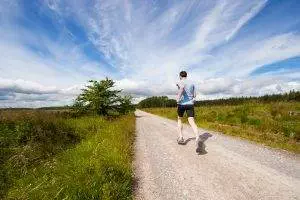
Photo by Jenny Hill on Unsplash
Many people have a baker’s cyst knee without realizing it. If there is no pain, a person may not notice the lump behind knee.
Baker’s cyst signs and symptoms include:
- Knee pain, pain in the back of the knee
- Knee stiffness, stiff knee joint, especially when straightening the leg
- Swollen knee, swelling in knee joint
- Swelling goes away when knee is bent
- Pain and stiffness are worse after standing for a long time
More severe baker’s cyst symptoms could include redness and swelling, as the cyst gets larger.
In some cases, a baker’s cyst can rupture. If this happens, there may be swelling, redness, and a warm sensation in the calf area. Rupture of a baker’s cyst could cause pain or numbness in the calf, lack of blood flow to the lower leg, as the ruptured cyst could trap a nerve or artery in the knee or lower leg.
In extreme cases, a ruptured Baker’s cyst could lead to compartment syndrome, which could cause intense pain, foot drop, edema in the lower leg, and possibly, even an inability to move the foot or toes. If you believe your Baker’s cyst has ruptured, you should seek emergency care.
While, in most cases, a Baker’s cyst will eventually go on on its own, it is best to get a diagnosis and discuss your options. Acupuncture and TCM offer treatment of Baker’s cysts that is non-invasive and can help improve healing and prevent regrowth of the cyst.
Baker’s Cyst Treatment
Baker’s cyst signs and symptoms can be similar to those of a blood clot, or even a tumor. So, while a doctor can often diagnose a Baker’s cyst simply by palpating the area, they may also order imaging tests to be sure.
In many cases, doctors will prescribe over the counter pain medications and allow time for the cyst to go away on its own. You may be advised to limit activities that might aggravate the knee inflammation. Resting and elevating the knee for a few weeks might be recommended.
In some cases, a doctor may give cortisone injections to reduce knee swelling, or perform needle aspiration to drain the fluid from the cyst.
Surgery is generally only suggested in situations in which the knee pain has become chronic and inflammation does not seem to be going away.
Unfortunately, these medical treatments for Baker’s cyst may help bring relief, but it is quite common for the Baker’s cyst to come back again. Acupuncture treatment is not only a good way to bring symptomatic relief, but can help prevent the recurrence of Baker’s cysts.
Acupuncture has long been considered an excellent modality for treating knee pain due to all types of conditions. TCM offers an adjunct or alternative treatment for knee pain, without side effects that can come with pain medications or steroids.
Can Acupuncture Help Baker’s Cyst?

Acupuncture and TCM treatments with Chinese herb formulas have been used for centuries to treat knee injuries of all kinds.
According to TCM theory, arthritis in the knee that causes pain and stiffness is caused by stagnation that blocks the smooth flow of blood and Qi (life force energy). Acupuncture and herbs are used to address the underlying causes of blockages.
Injuries like a torn meniscus in the knee, or damage to the cartilage of the knee are very common, and it is also common for a person who has suffered such an injury to develop a Baker’s cyst later on. Full healing of cartilage can be helped with specific herbs that bring more nutrients to the damaged tissues.
Once a pattern of inflammation has begun, it can be difficult to get the swelling to go away. Small movements can trigger the inflammatory response if the area is not fully healed, and if other lifestyle habits are also causing a person to be prone to inflammation.
Chinese medicine looks at the situation holistically, treating the situation with acupuncture treatment, cupping, herbs, and nutrition, so that overall inflammation is reduced, and swelling and pressure is reduced, as well.
Herbal patches that are applied topically may be used in addition to herbal teas taken internally, to help relieve knee pain and swelling.
Cupping can also be helpful for healing and prevention of Baker’s cysts. One study compared patients with a popliteal cysts who were treated with acupuncture and cupping to patients who were given injections of prednisone. Both groups had high rates of effectiveness in terms of relief from the cysts, but recurrence of Baker’s cyst was significantly lower in the group that received TCM treatment as opposed to steroids.
Acupuncture Near Me for Baker’s Cyst, Los Angeles, CA
If you or someone you know has been suffering from knee pain and stiffness, due to a knee injury, arthritis, or diagnosed with Baker’s cysts on knee, it is worth seeking help from an acupuncturist experienced in working with orthopedic injuries, like Dr. Tan at Art of Wellness in West Los Angeles. TCM treatment for Baker’s cyst and other problems with the knee joint can not only help to relieve pain and increase range of movement; it can help prevent knee pain from coming back in the future.
*This article is for education from the perspective of Traditional Chinese Medicine only. The education provided by this article is not approved by FDA to diagnose, prevent, treat and cure human diseases. It should not stop you from consulting with your physician for your medical conditions. Traditional Chinese Medicine is based on Qi, which is an invisible force that usually cannot be observed by modern science. Because science focuses on testing ideas about the natural world with evidence obtained through observation, these aspects of acupuncture can’t be studied by science. Therefore acupuncture and Chinese herbs are often not supported by double-blind, randomized trials, and they are considered alternative medicine therapies in the United States.